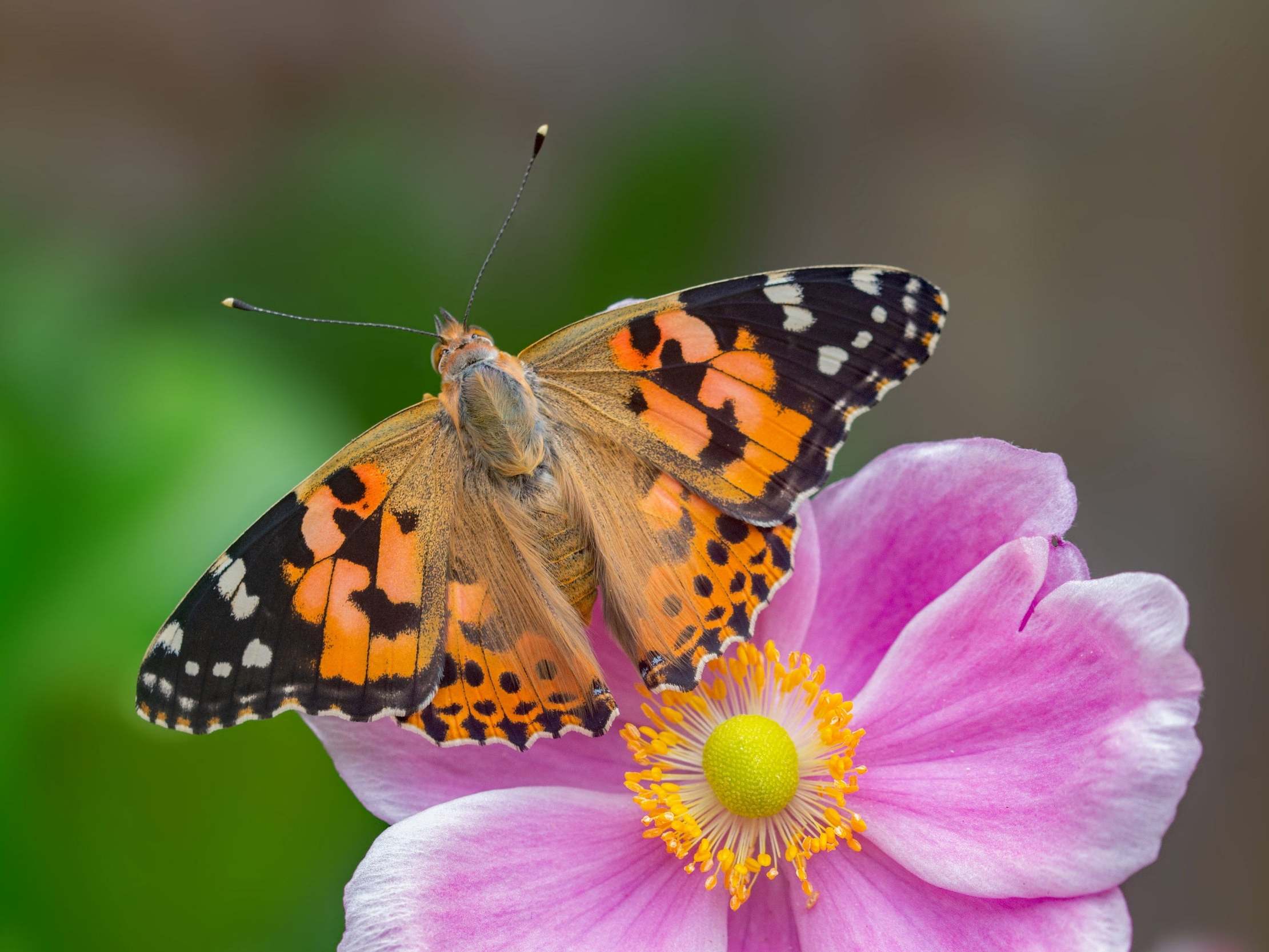Unusually high number of painted lady butterflies migrated to UK in 2019, survey finds
Spike in butterfly visitors welcome relief for experts amid continuing worries of numbers being hit by climate change

Your support helps us to tell the story
From reproductive rights to climate change to Big Tech, The Independent is on the ground when the story is developing. Whether it's investigating the financials of Elon Musk's pro-Trump PAC or producing our latest documentary, 'The A Word', which shines a light on the American women fighting for reproductive rights, we know how important it is to parse out the facts from the messaging.
At such a critical moment in US history, we need reporters on the ground. Your donation allows us to keep sending journalists to speak to both sides of the story.
The Independent is trusted by Americans across the entire political spectrum. And unlike many other quality news outlets, we choose not to lock Americans out of our reporting and analysis with paywalls. We believe quality journalism should be available to everyone, paid for by those who can afford it.
Your support makes all the difference.This summer was a "painted lady year", with almost half a million of the migratory butterflies recorded as part of an annual count, experts have said.
Results from members of the public taking part in the survey run by Butterfly Conservation have allowed the wildlife charity to confirm that 2019 was a year when unusually high numbers of painted ladies arrived in the UK.
A "painted lady year" is a natural phenomenon that occurs about once a decade, the experts said, with the last big influx of the migratory butterfly taking place in 2009.
Results from the Big Butterfly Count, which took place over three weeks in the summer, show that the number of painted lady butterflies was almost 30 times greater than in 2018.
The count also revealed that several other common species have experienced a good summer, helped by the fine weather - in some cases boosting butterflies which have been struggling in recent years.
Peacock butterflies had their best summer since 2014, with a 235% increase in numbers sighted compared with last year, while the marbled white saw a 264% increase.
Red admirals were up 138%, gatekeepers up 95%, and there was a 64% rise in sightings of the six-spot burnet moth, one of two day-flying moths counted in the survey.
And the struggling small tortoiseshell had its best result since 2014, with around 70,000 spotted during this summer's count.
Scientists continue to be worried about the butterfly, which has seen declines of around 78% since the 1970s, and suggested climate change could be having an impact on its fortunes.
Butterfly Conservation's Richard Fox said: "Last year the small tortoiseshell experienced its worst summer in the history of the Big Butterfly Count, so to see its numbers jump up by 167% this year is a big relief."
He added that the results showed the species performed far better in Scotland and Northern Ireland than in England and Wales.
"We're still trying to establish what is behind the long-term decline of the small tortoiseshell and, while it is good news that the butterfly fared better this summer, the poor results in southern England in particular suggest that climate change may be having more of an impact on this species than we have previously realised."
Mr Fox added: "The painted lady obviously stole the show this summer, taking the top spot in England, Wales, Scotland and Northern Ireland, but 2019 has also been the most successful Big Butterfly Count in its 10-year history, with more people taking part and more counts being submitted than ever before."
It was less good news for small white, large white and green-veined white butterflies, which all saw their numbers drop by 42% compared with last year, while common blue and holly blue butterflies were both down by more than half.
The experts said these species all experienced a bumper year in 2018, and this year's drop could be the result of being preyed on by parasitic wasps whose populations may have been boosted by the butterflies' success last year.
Press Association
Join our commenting forum
Join thought-provoking conversations, follow other Independent readers and see their replies
Comments